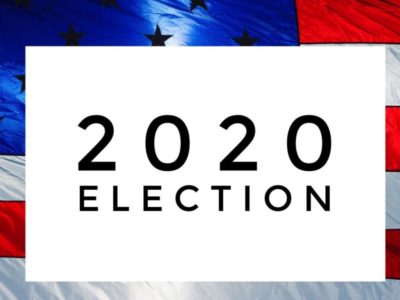Is Socialism Good for the Environment?
The answer is: "Sometimes yes, sometimes not so much."
Some of the people who are most fervent about the environment these days describe themselves as socialists. But is socialism actually a good thing for the environment? That seems like a significant question in a political context where people on both sides are throwing around the word "socialist" so much, so I decided to see if there's any actual evidence on the question. Before looking at the evidence, we first have to decide what we mean by “socialism.” An i...
CONTINUE READINGSaved By The…Air Conditioner?
New Paper Proposes Carbon Sequestration From HVAC Systems
You have to like the idea carbon sequestration: if our ability to stop putting carbon into the atmosphere is limited, why not try taking it out? But it always seems to founder on a life-cycle analysis: it costs so much in energy to get the system working that you wind up producing more carbon than you withdraw. But now comes Roland Dittmaier of Germany’s Karlsruhe Institute of Technology and Geoffrey Ozin of the University of Toronto, with a new idea: use the HVAC...
CONTINUE READINGParking versus Housing at UC Berkeley
UC Berkeley faces same dilemma as much of rest of California in addressing the housing crisis
UC Berkeley is not immune to California’s housing crisis. Indeed, as the student newspaper noted, the campus “has housing for 22 percent of undergrads and 9 percent of graduate students – vastly lower than the UC average of 38.1 percent for undergraduates and 19.6 percent for graduate students.” Moreover, soaring housing costs have made it hard for the campus to recruit new faculty. To deal with the issue, the campus has developed an aggressive program to deve...
CONTINUE READINGGetting Lost In The Woods?
New Study From India Points to Dangers From Forestry Sector Emissions Trading
Despite the Trump Administration’s dedication to melting the planet, the rest of the world is gamely pushing ahead with implementing the Paris Accord, and that means programs like United Nations Collaborative Programme on Reducing Emissions from Deforestation and Forest Degradation in Developing Countries (REDD+) and the Clean Development Mechanism (CDM). The two are linked, because a big part of CDM involves Afforestation and Reforestation – thus, “CDM A/R.” ...
CONTINUE READINGGood News from the States: April 2019 Roundup
While the Feds backpedal, the states move forward on clean energy.
Every day seems to bring more news of the Trump Administration’s dogged efforts to reduce environmental protections and accelerate climate change with increased carbon emissions. But, as has been true since Trump took office, the picture at the state level is much different. State governments across the country have accelerated their efforts to decarbonize, while efforts save the coal industry have foundered. Here are some of the latest developments. Early thi...
CONTINUE READINGChina’s Energy Transition
Q&A with Barbara Finamore, Senior Attorney & Asia Senior Strategic Director, NRDC
Barbara Finamore is an attorney and leading expert for Natural Resources Defense Council on a wide range of China climate, energy, and environmental issues. I worked with Finamore to found NRDC’s Beijing office in 2006. In her new book Will China Save the Planet?, Finamore explores efforts by China, today the world’s largest emitter of global greenhouse gas emissions, to curb pollution from its power sector and transition to clean energy. Earlier this month...
CONTINUE READINGEmmett Institute Faculty Publications Selected Among Top Five Articles in Environmental Law in 2018
Editors of the definitive annual compilation of the most significant scholarly articles in environmental law have selected articles by Emmett Institute faculty members Ann Carlson and Jim Salzman for their 2018 edition. The Land Use and Environmental Law Review selects the top five articles each year through a peer review process. Ann Carlson’s article in UCLA Law Review addresses the Clean Air Act’s shortcomings in microclimates with high levels of local air ...
CONTINUE READINGHUGE
New Addition to California's Infill Housing Bill Could Transform the State's Land Use
If there is one journalistic phrase I despise, it is "game-changer." Everything seems to be a game-changer, no matter how small. But amendments just approved by the California State Senate for SB 50, Scott Wiener's controversial bill upzoning lots near transit could be, well, a game-changer: On Wednesday, a key committee signed off on Senate Bill 50 — San Francisco Sen. Scott Wiener’s bill to allow denser, taller housing around transit and in communities with lo...
CONTINUE READINGClimate Change & the Democratic Candidates
The candidates are all in favor of climate action but there are significant variations in their stances.
It’s hard to keep track of the twenty or so Democrats who are in the running for the 2020 presidential nomination. The differences between them on climate policy are minor compared with the gulf between them and President Trump. All of them support the Paris Agreement, unlike Trump. And all of them vow to restore Obama’s climate change regulations. But it’s worth taking a look at some of the nuances, for whatever clues they may give us about what the even...
CONTINUE READINGWhy Is Los Angeles Embracing Stupid Growth?
Council Wants Hotels, But No Housing
Yesterday, I expressed wonder that the City of Los Angeles actually did planning right for a change. Obviously, I jinxed it. Reducing VMT, and thus carbon emissions, requires cities to plan and zone for affordable housing (whether defined as deed-restricted or simply at a reasonable market rate). But despite city leaders' claims of an affordable housing crisis, the City Council seems more interested in satisfying the hospitality industry: The Los Angeles City Cou...
CONTINUE READING











